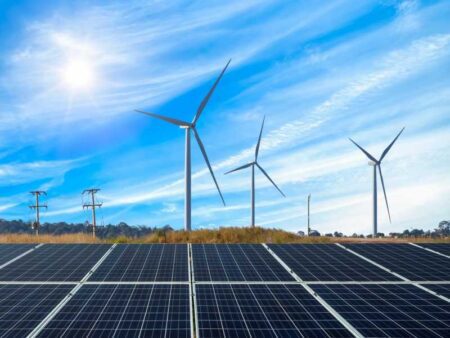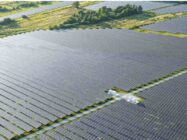
Energy industry experts from BayWa r.e share their predictions for floating offshore wind, corporate PPAs, IPPs and storage in 2024.
Floating offshore wind
By Felipe Cornago, managing director, offshore wind.
Floating offshore wind will play a critical role in the fight against climate change, with its ability to allow access to markets incompatible with bottom-fixed technologies and unlocking areas with higher wind potential. Despite the promising technology, several challenges are holding back the widespread deployment of this next generation of offshore wind.
Cost pressures and inflation are significantly impacting the tendering for projects. This economic context, coupled with challenges in the supply chain, is pushing out smaller players. Looking ahead to next year, there is a need for clearer criteria and improved transparency from governments, especially when it comes to tender processes, as well as for the establishment of coherent regulatory frameworks.
Effective tenders should not be based only on the highest bid for lease payments, but also on bidders demonstrating competitiveness and a credible delivery plan. Moreover, the sector must draw further on pre-existing infrastructure and experiences from bottom-fixed offshore technologies.
Much like other renewable solutions, the floating offshore wind market is also being hampered by insufficient grid connection – the “Achilles’ heel” of the energy transition. The European Commission recently unveiled a European Wind Power Package, which explores solving some of these challenges through developing cross-border offshore grids, fast-tracking permitting, strengthening infrastructure and securing supply chains.
Have you read?
2023 saw record demand lows and renewable highs across Europe
France’s energy transition – Siemens Energy France’s MD shares her vision
These are all worthy steps, and many I foresee making strong progress in 2024, but we are facing a ticking clock. Without rapid action, projects will slow down even further. Floating wind can be a real game changer for our future energy system, and we simply do not have the time to spare.
Corporate PPA
By Daniel Parsons, head of PPA EMEA.
Power Purchase Agreements (PPAs) enabling corporations to source green electricity have experienced a strong demand in 2023. Looking ahead, we expect record volumes for every sector in 2024 due to the expanding pool of companies actively asking for long-term PPAs as an electricity price hedge.
They come from many different industries – like the energy-intensive, automotive and telecommunications industry, as well as consumer goods sectors. We also see potential for growth among smaller and medium-sized companies, which will demand increased support at government level.
A key reason for corporations in Europe to contract PPAs is to show the consumption of electricity generated by renewable power plants through Guarantees of Origin (GOs). The prices for GOs increased significantly this year, but we expect the curve to flatten or even fall in 2024.
Pricing will continue to be influenced by the situation of the buyers, driven by factors such as their corporate sustainability strategy, whether they are in an energy-intensive industry, their experience as a PPA off-taker, as well as the type of renewable project they are purchasing energy from.
Ultimately, demand for PPAs is set to outpace supply, as off-takers become increasingly affected by delays due to supply chain issues or grid problems. Companies will therefore have to be more flexible in 2024 when it comes to their processes, adaptations, and terms of PPAs.
As with much of the renewable energy landscape, the fallout of persistent skills shortages will undoubtedly impact the high demand for PPAs. The sector is already short of experts to close the existing pipeline of deals, not to mention the increasing number of PPAs and players in the field. Education is key to addressing this, and we expect to see more upskilling and training in PPAs throughout 2024.
IPP
By Martina Dabo, head of asset management IPP.
Independent Power Producers (IPPs) are corporations, persons, agencies, or authorities – almost anything except an electric utility – who own or operate facilities that generate electricity for predominantly public use. Next year, we expect IPPs to continue to offer a unique route to supercharging the availability of affordable green electricity amidst rising demand, writes.
With lower barriers to entry for new energy players, IPPs pave the way for an energy market that is more competitive and non-monopolised. Having an IPP portfolio also offers renewable energy developers the chance to optimise revenues in a challenging macroeconomic climate and flexibility in an ever-changing market.
However, to make the most of these opportunities in 2024 and beyond, IPP businesses must overcome a number of challenges. Firstly, the ongoing issue of grid connection – with high charges, poor availability and a lack of robustness all causing delays in getting projects online. Especially with regards to the important stakeholder relationships IPPs have at local level, this issue is critical when it comes to community acceptance.
Meanwhile, permitting and administration of new projects are also creating barriers. These can be overcome if IPPs gain more prominence in the public eye and regulation is smoothed out, and investments are made in the right people and the right technology.
The multiple moving parts of IPPs highlight just how diverse the green energy transition is. But we have a clear path forward and, with enough education, investment and planning, we can ensure that we are doing everything in our power to accelerate progress over the coming 12 months.
Storage
By Julian Gerstner, head of storage EMEA.
In 2024, we expect positive sentiment around storage solutions to grow and, as a result, their increased development around the world. Currently, they offer the opportunity to bring stability and flexibility not just to the electricity grid, but to the energy market that ebbs and flows with unpredictable world events and varying market prices.
At times of low demand, they hold back the electricity so that it can be released again at times of high energy demand – reducing strain on the grid and at the long-term helping to reduce costs for end-users. Furthermore, storage systems also alleviate redispatch costs and reduce curtailment of wind and solar farms.
To fully take advantage of the opportunity storage presents, there are several challenges we must look to address in the coming year. Firstly, we urgently need a paradigm shift in the political and regulator community on every level to acknowledge the importance of storage. A key component to this is increasing the number of studies emphasizing the cost-benefits and flexibility advantages of storage systems – directed especially to political decision makers.
We also need political regulation to grant storage systems priority access to the grid and create a market environment that offers ancillary services to make it a more economically attractive venture. The EU regulations in the RED III, as well as the planned approval of the new Energy Market Design, are steps in the right direction.
Storage is a stable, sustainable all-rounder and, simply put, the successful energy transition depends on it. This is why there must be tangible progress made in 2024, from regulators to communities to storage operators, so that together we can take advantage of the benefits storage has to offer.








